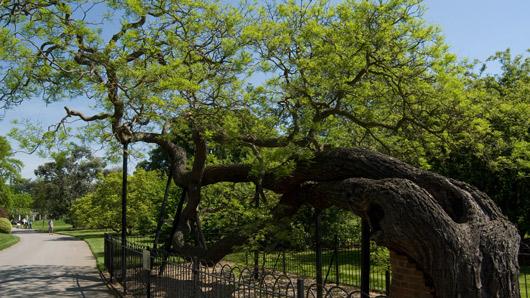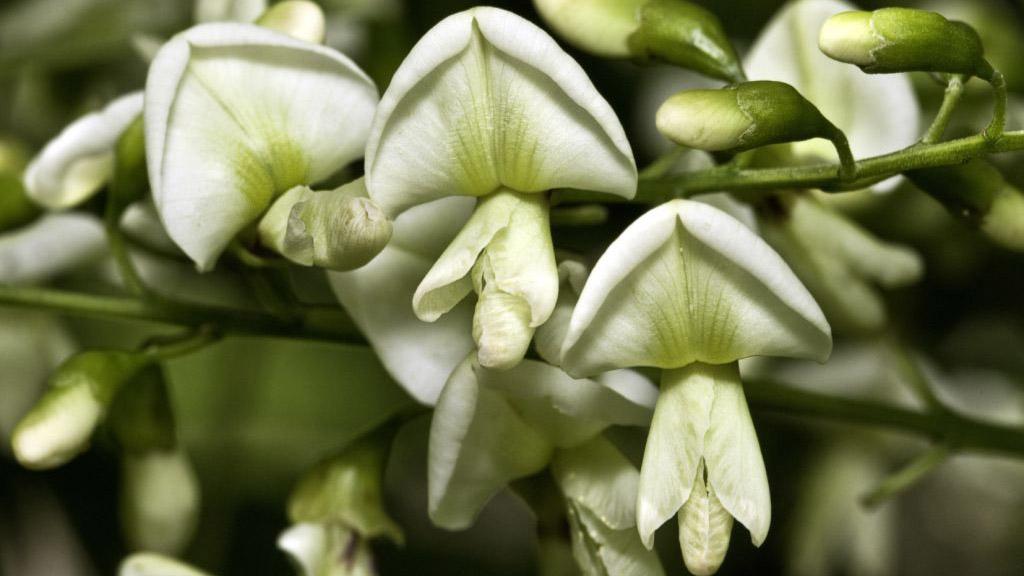Japanese Pagoda Tree
styphnolobium japonicum
Also known as: ["Pagoda Tree","Chinese Scholar Tree"]
Overview
A deciduous tree native to East Asia, known for its elegant form and fragrant flowers.
Benefits & Perks
["fragrant flowers","wildlife attractant (bees, butterflies, birds)","shade tolerant"]
Botanical Classification
| Phylum: | Magnoliophyta |
| Class: | Magnoliopsida |
| Order: | Fabales |
| Family: | Fabaceae |
| Genus: | Styphnolobium |
| Botanical Name: | Styphnolobium japonicum |
Plant Characteristics
Basic Information
- Category: Trees
- Suitable Location: outdoor garden in a sunny spot with protection from strong winds
- Suitable For:
- Is Weed: No
- Allergenicity: low
Environmental Needs
- Climate: {"temperatureRange":"5–35°C"}
- Hardiness: {"zones":"6–9"}
- Misting: rarely required, only if ambient humidity is very low
- Drainage: Fast-draining; avoid waterlogged conditions.
- Soil Type: Well-draining, loamy soil with added organic matter; tolerates poor soils but thrives with good drainage.
Maintenance Level
- Maintenance Level: moderate
- Toughness Level: high
- Pruning Frequency: Annually after flowering or in late winter; light pruning can be done as needed throughout the growing season.
- Pruning Intensity: Moderate; remove up to one-third of old growth if rejuvenation is needed; otherwise, light to modera
Care Details
Ideal Sunlight Coverage:
Full sun (6–8 hours of direct sunlight daily); tolerates partial shade but may produce fewer flowers.
Sunlight Tolerance Tips:
Acclimate plants gradually to intense sunlight; protect from harsh afternoon sun in hot climates; ensure adequate light indoors if grown as a container plant.
Care Requirements
Care Difficulty
moderatemoderate
Sunlight
full sun to partial shade
Rotate plant for even light exposure; use sheer curtains to filter intense sun; place near south-facing window indoors.
Watering
every 7–10 days during growing season, less frequently in winter
Water thoroughly until it drains from the bottom; allow soil to dry between waterings; avoid overwatering.
Soil
well-drained, loamy soil with moderate fertility
pH: Slightly acidic to neutral (pH 6.0–7.0); adaptable to a range of soil pH levels.
Ensure good drainage to prevent root rot; amend heavy clay soils with organic matter; test soil pH periodically.
Temperature
Hardy in USDA zones 5–8; tolerates temperatures between -20°F and 100°F; prefers moderate temperatures for optimal growth.
Monitor temperature extremes; adjust watering and light exposure accordingly; protect from frost in cold climates.
Fertilizing
every 4–6 weeks during spring and summer, none in fall and winter
Fertilize once in spring; dilute liquid fertilizer to half strength if using; avoid fertilizing dormant plants.
Propagation
Methods
Stem cuttings or seed; hardwood cuttings taken in winter or early spring are most reliable.
Step-by-Step Propagation Guide
- Take 4–6 inch cuttings.
- Remove lower leaves.
- Dip in rooting hormone.
- Plant in medium.
- Keep moist and warm.
Best Time: Late winter or early spring before active growth begins; seeds can be sown in spring after stratification.
Environment
Warm, humid environment with indirect light; maintain consistent moisture until roots develop.
Medium
Well-draining potting mix with perlite or sand; can also root in water for softwood cuttings.
Hormone
Rooting hormone is recommended for stem cuttings to improve success rates.
Timeline
Stem cuttings may root in 4–8 weeks; seed germination can take several weeks to months.
Tools Needed
Pruning shears, rooting hormone, pots, well-draining medium, plastic wrap or propagator.
Quick Tips
Use healthy, disease-free cuttings; maintain humidity around cuttings; avoid direct sunlight during rooting.
Pruning & Repotting
Pruning Guide
Method
Use clean, sharp tools; make cuts just above a bud or branch junction; remove crossing or crowded branches.
Pruning Plan
Prune to maintain shape, remove dead or diseased wood, and encourage flowering; best done after flowering or in late winter.
Tools
Pruning shears, loppers, saw (for larger branches), disinfectant for tools.
Checklist
Disinfect tools; prune at the right time; remove dead or diseased wood first; make clean cuts; avoid over-pruning.
Repotting Guide
Best Season
Early spring before new growth begins; avoid repotting during dormancy or extreme weather.
Pot Size
Increase pot size by 2–3 inches in diameter; ensure the new pot has drainage holes.
Method
Remove plant carefully; trim any circling roots; place in a slightly larger pot with fresh soil; water thoroughly after repotting.
Suggestions
Repot every 2–3 years or when roots fill the container; container-grown plants may need repotting more frequently.
Checklist
Choose appropriate pot size; prepare fresh soil mix; trim roots if necessary; water after repotting; place in appropriate light.
Advanced Care Tips
Watering Mastery
Watering Checklist
Check soil moisture before watering; water deeply; ensure proper drainage; adjust frequency with seasons.
How to Apply Water Properly
Water at the base of the plant, ensuring moisture reaches the root zone; water early in the day to minimize evaporation; ensure excess water drains away to prevent waterlogging.
Watering Schedule Tips
Water deeply once the top inch of soil feels dry; reduce frequency in winter to prevent root rot.
Soil Improvement
Add compost or well-rotted manure to enhance fertility; incorporate perlite or sand for better drainage.
Temperature Stress Management
Signs of Temperature Issues
Leaf scorch or wilting in excessive heat; leaf drop or stunted growth in cold stress.
Cold Stress
Low temperatures can slow growth and cause leaf drop; prolonged freezing may damage branches or roots.
Solution: Mulch heavily around the base in winter; protect from harsh winds; move container plants indoors or to a sheltered location.
Hot Stress
Excessive heat can lead to leaf scorch, wilting, and reduced flowering; may cause water stress if not adequately hydrated.
Solution: Provide afternoon shade in extreme heat; increase watering frequency; use mulch to retain soil moisture.
Fertilizing Guide
Fertilizing Checklist
Use balanced fertilizer; apply in early spring; water before and after fertilizing; avoid contact with stems or leaves.
Fertilizing Method
Use a balanced, slow-release fertilizer in early spring; avoid over-fertilizing, especially in late summer or fall.
Common Problems & Solutions
Toxicity Warning
Cats
Slightly ToxicCats are susceptible to mild toxicity from Styphnolobium japonicum, particularly if they consume the seeds or bark. The alkaloids can lead to gastrointestinal and neurological disturbances.
⚠️ Symptoms:
🌿 Toxic Parts:
⚡ Toxic If:
if eaten
Dogs
Slightly ToxicDogs may experience mild gastrointestinal upset and neurological symptoms if they ingest significant amounts of Styphnolobium japonicum seeds or bark. The alkaloids present can affect the digestive and nervous systems.
⚠️ Symptoms:
🌿 Toxic Parts:
⚡ Toxic If:
if eaten
Humans
Slightly ToxicStyphnolobium japonicum contains quinolizidine alkaloids, which can cause mild gastrointestinal distress and neurological effects if ingested in significant quantities. The seeds and bark are the primary toxic parts due to their higher alkaloid concentration.
⚠️ Symptoms:
🌿 Toxic Parts:
⚡ Toxic If:
if eaten
Frequently Asked Questions
Q: Is the Japanese Pagoda Tree suitable for urban environments?
A: Yes, it is tolerant of urban pollution and can thrive in city landscapes.
Q: Does the tree require full sun?
A: It prefers full sun but can tolerate partial shade.
Q: How tall does the Japanese Pagoda Tree grow?
A: It can reach heights of 50-75 feet when mature.
Quick Reference
| Family: | Fabaceae |
| Care: | moderate |
| Light: | full sun to partial shade |
| Water: | every 7–10 days during growi |
Get Expert Care Tips
Download the Plantious app for personalized care reminders and plant identification!
Google Play App Store








